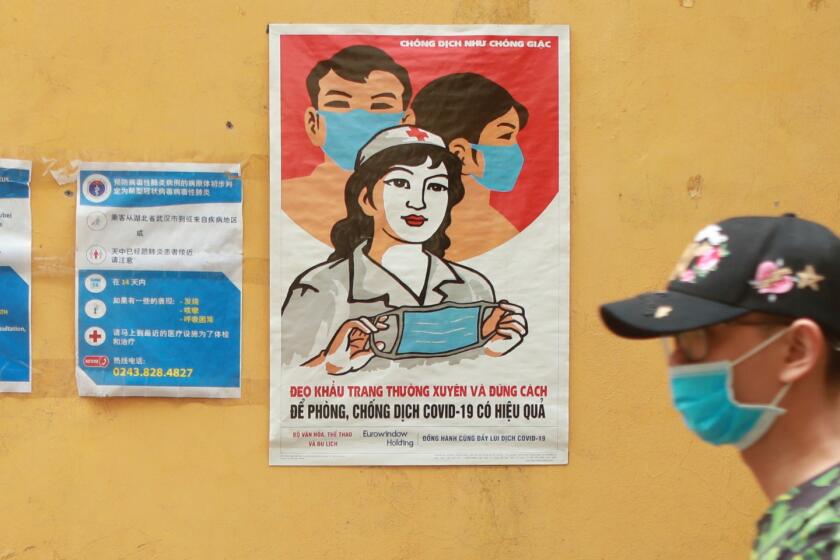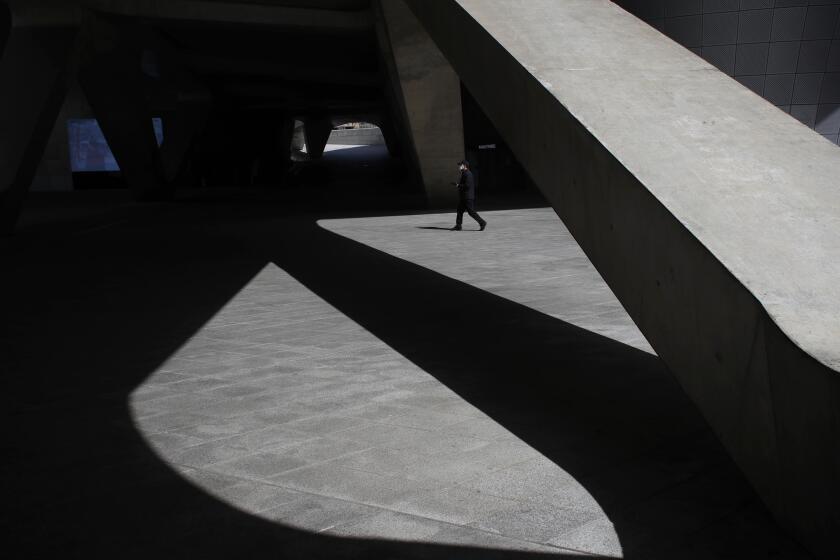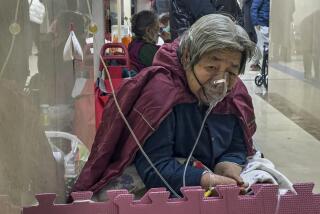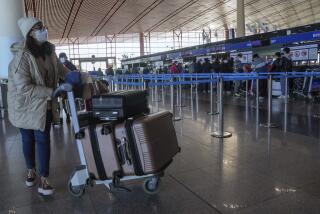Without a single COVID-19 death, Vietnam starts easing its coronavirus lockdown
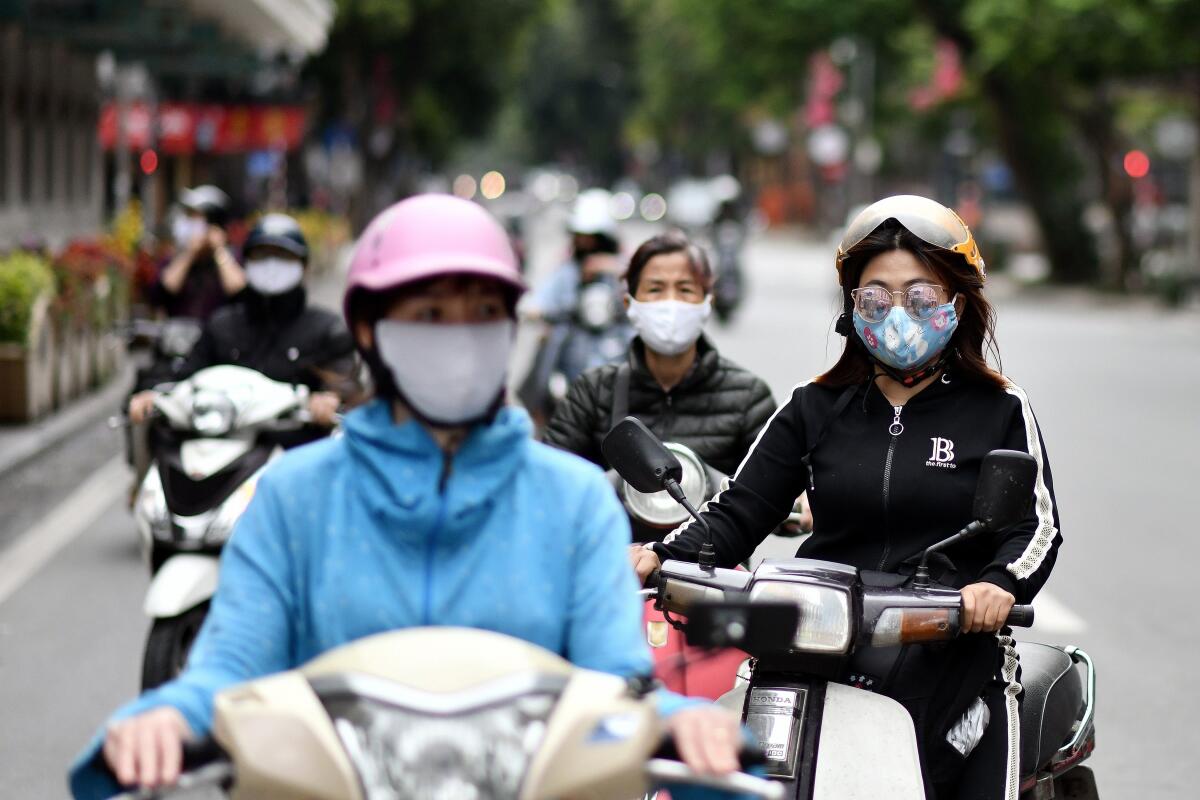
- Share via
SINGAPORE — Offering a rare and surprising bright spot in the COVID-19 pandemic, Vietnam began easing its nationwide lockdown Thursday following an aggressive containment campaign that has meant few infections and no deaths in an Asian nation initially believed to be at great risk from the coronavirus.
The communist-ruled country has sealed its borders, quarantined masses of people, used soldiers and police to track down potential infections and fined social media users for spreading misinformation. After deploying the full arsenal of a single-party state, the sprawling nation of 95 million people has now gone a full week without recording a new infection.
But despite their effectiveness, Vietnam’s measures are not easily replicable. Its intolerance of dissent and ability to mobilize an entire security and political apparatus — steps more common in China — meant its campaign met little of the pushback seen in Western liberal democracies.
And experts caution that the fight isn’t over. Starting Thursday, Vietnam allowed residents across the country to resume small gatherings and restarted buses, taxis and regular domestic flights for the first time in three weeks. But with much of Southeast Asia still under lockdown, people must continue wearing masks in public, gatherings of more than 20 remain off-limits, schools will stay closed for several more weeks and international flights are still grounded, officials said.
“Many parts of the world are still infected, so the risk is not over for us,” Prime Minister Nguyen Xuan Phuc said this week.
Since the government imposed a partial nationwide lockdown April 1, Vietnam saw only a modest increase in coronavirus cases to 268, with all but 44 recovered and no fatalities.
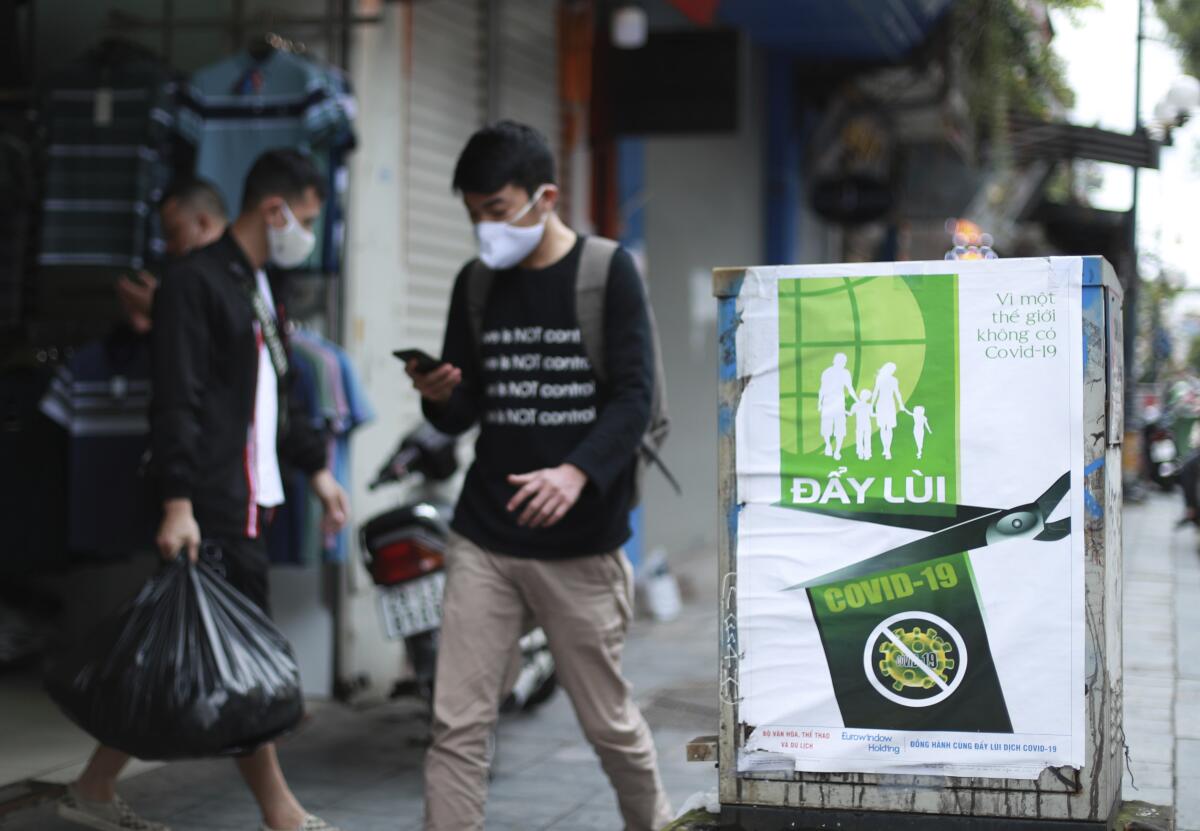
The numbers are stunningly low considering that Vietnam — which shares a border with China — was among the first countries where the virus spread and lacks the resources of governments more celebrated for their containment strategies, such as South Korea’s widespread testing and Taiwan’s aggressive digital surveillance.
Its results stand out even more as other Southeast Asian countries struggle. Wealthy Singapore, once regarded as a model, has seen infections skyrocket among migrant workers living in overcrowded dormitories. Indonesia, the largest country in the region, initially ignored the threat and now has the most COVID-19 deaths in Asia after China.
“It’s pretty amazing,” said Huong Le Thu, a senior analyst at the Australian Strategic Policy Institute. “I’m cautious of calling Vietnam a success story. It’s too early to be out of the woods. But the measures have been quite effective so far.”
Experts credit Vietnam’s early, decisive steps: swiftly banning nearly all travel from China, suspending schools in mid-January even before recording any infections, quarantining tens of thousands of people and employing the extensive Communist Party apparatus to communicate distancing measures and trace the contacts of COVID-19 patients.
The Los Angeles Times will provide around-the-clock updates on COVID-19 from across Southern California and around the world.Tracking the coronavirus in California: latest numbers | Support our journalism with a subscriptionHave a question about coronavirus? Send us your questions here. | You also can sign up for our newsletterSee latest photo galleryCoronavirus updates for April 22 are here
The response was made possible by a Leninist one-party system that is often criticized for maintaining secrecy, silencing dissent and trampling on individual rights — but that has proven adept at tackling health crises since it was the first nation to stamp out the SARS epidemic nearly two decades ago.
“Only a few countries can control and mobilize resources on this scale,” said Le Hong Hiep, a Vietnam analyst at the ISEAS-Yusof Ishak Institute in Singapore. “In Vietnam they can do it, and partly because of a political system that’s designed to respond to such situations. It’s not always good, but in a crisis it helps.”
The sweeping measures often led to large numbers of people being isolated over just a handful of infections.
In February, when a group of Vietnamese workers tested positive for the virus after returning from Wuhan, the Chinese city that was the source of the outbreak, authorities locked down their entire commune of 10,000 people for three weeks — the first mass quarantine outside China.
Last month, more than 300 medical staff, police, soldiers and civilians were deployed to track down the contacts of a British pilot believed to be the origin of a coronavirus cluster at a bar in Ho Chi Minh City. Authorities sealed off several businesses and quarantined thousands of people in their apartments.
Long before the coronavirus, South Koreans had begun reducing human contact in their lives. The pandemic might make that disassociation permanent.
In recent weeks, as imported infections surged across Asia, Vietnam placed tens of thousands of incoming travelers — whether they showed COVID-19 symptoms or not — in quarantine at army barracks, university dorms and other public facilities.
As precautionary steps, they were aggressive, perhaps overly so. But they kept pressure off of Vietnam’s hospitals and allowed contact tracers to focus on a relatively small number of clusters.
“What we know now is this virus spreads from pre-symptomatic people, and if you’re only monitoring people when they get symptoms it’s too late,” said Todd Pollack, a Harvard Medical School infectious disease specialist who leads a health initiative in the Vietnamese capital, Hanoi.
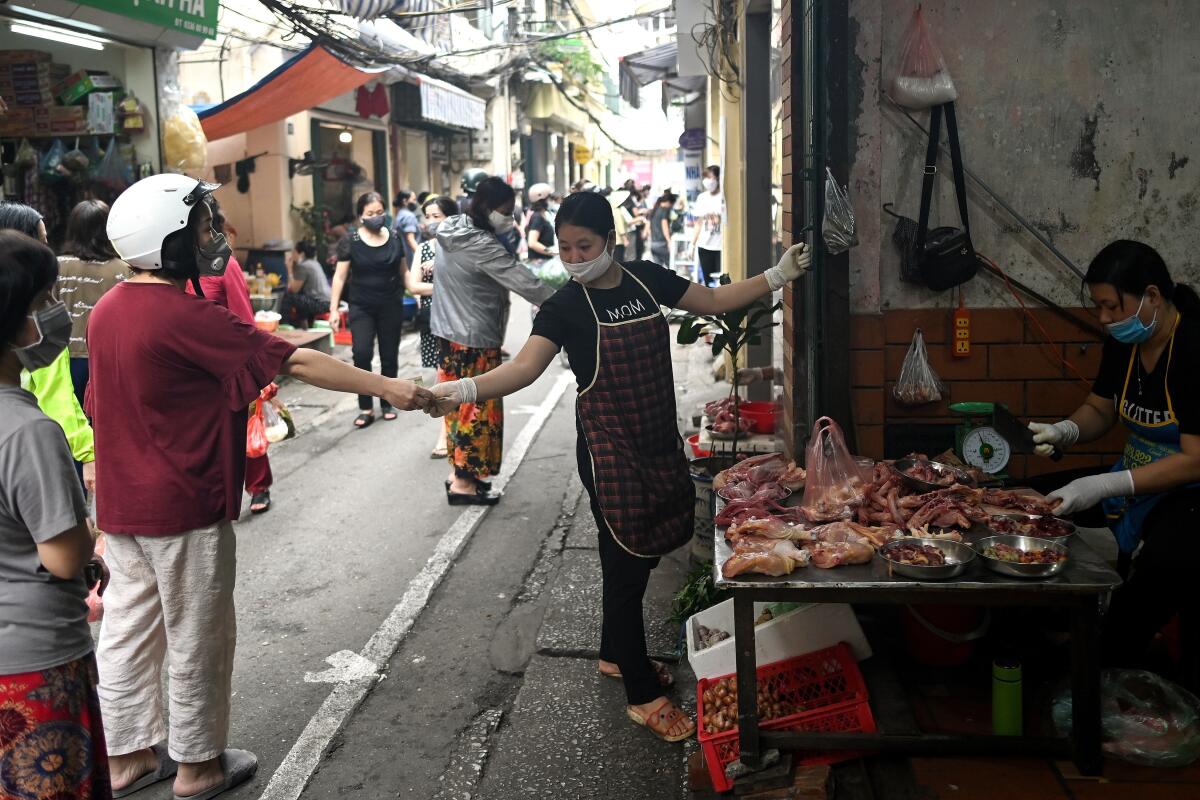
American officials have been struck by Vietnam’s low infection rate. Experts from the U.S. Centers for Disease Control and Prevention in Vietnam — who have provided assistance in testing, data analysis and contact tracing — say they “don’t have any indication that those numbers are false,” Dr. John MacArthur, the center’s director in Thailand, said on a conference call with reporters last week.
This week, state media reported that tests of more than 1,000 shoppers in Hanoi markets and more than 19,000 travelers at airports and train stations in Ho Chi Minh City found no infections, bolstering the belief that the outbreak has been contained.
Its success has allowed Vietnam to begin playing the role of benefactor — a subtle challenge to its sometime rival China — donating hundreds of thousands of masks to Europe and its Southeast Asian neighbors.
This month Hanoi expedited the shipment to the U.S. of nearly half a million protective medical suits manufactured at a DuPont factory in Vietnam, earning a thank-you tweet from President Trump.
Analysts say Vietnam’s turbulent relationship with China influenced its response to the outbreak. Days after China reported the first death from the virus Jan. 11 — and before any cases had surfaced in Vietnam — the health ministry held a high-level meeting with U.S. and World Health Organization officials to lay out a containment plan.
At the core of Vietnam’s concern was the suspicion “that the scale of the outbreak was much higher than what is officially reported by China,” Le said. That skepticism turned out to be well founded as China was accused of suppressing initial reports about how fast the virus was spreading.
This week, the U.S. cybersecurity company FireEye reported that hackers linked to the Vietnamese government had attempted to break into the email accounts of Chinese emergency management officials and authorities in Wuhan beginning in January — ostensibly to learn more about the outbreak.
“Vietnam understands China better than some other countries,” Le said. “Because of the similar political systems, they know how China works, and they know the risks and downsides of such systems. They know there may be problems in China’s data. So in dealing with China, Vietnam is very cautious.”
More to Read
Sign up for Essential California
The most important California stories and recommendations in your inbox every morning.
You may occasionally receive promotional content from the Los Angeles Times.
